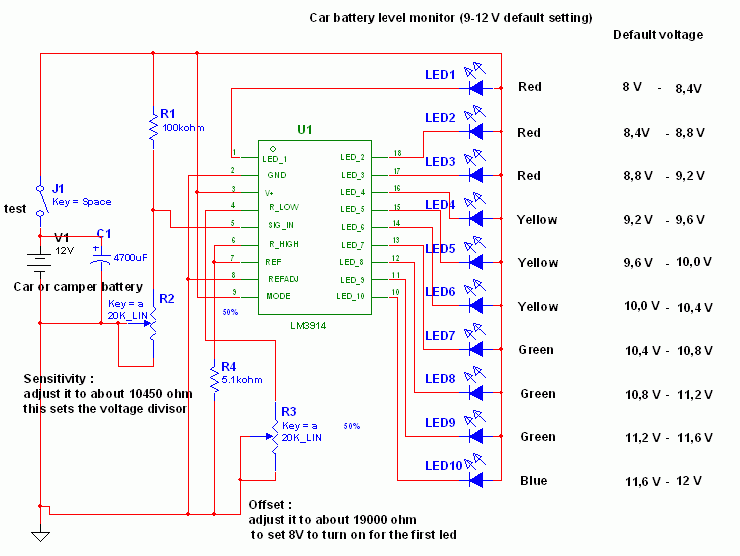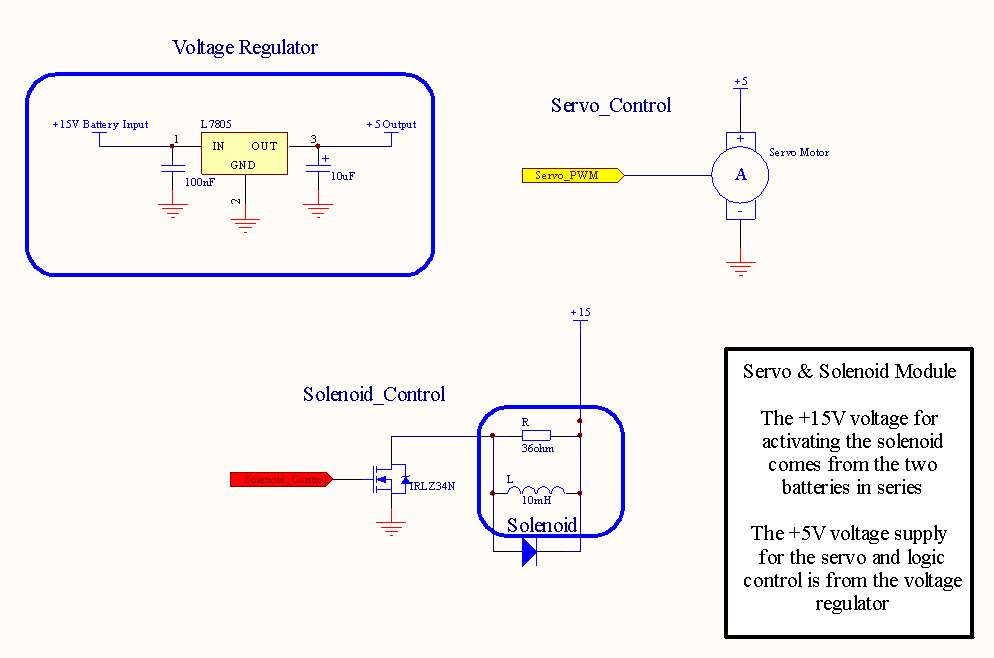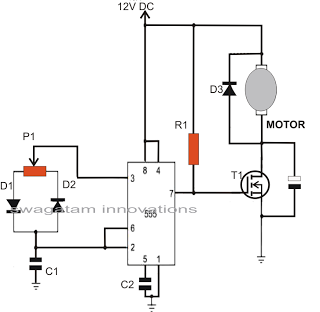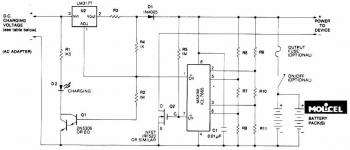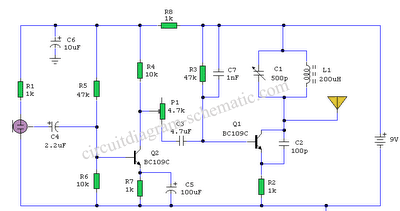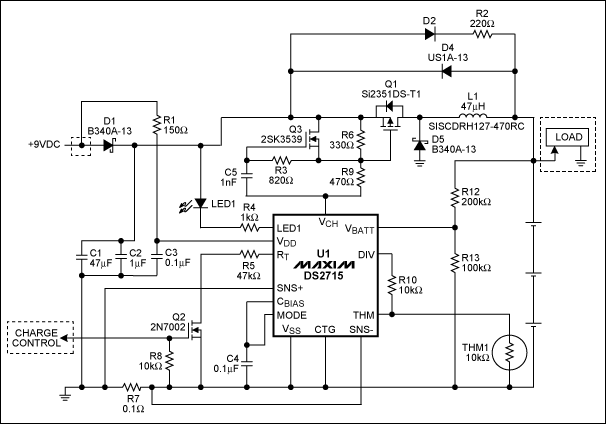
Solar Battery Charger Circuits
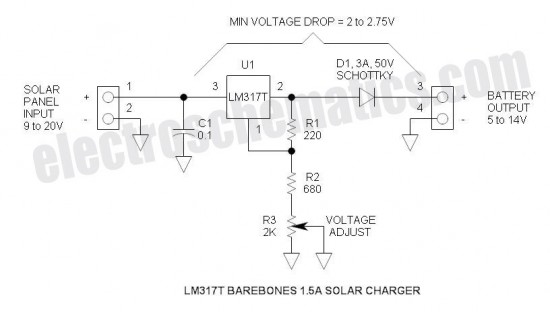
This is a simple and cost-effective solar battery charger that can be constructed by hobbyists. It has some limitations compared to other similar controllers, but it also provides several benefits. While primarily designed for charging lead-acid batteries, it can also be utilized for charging any battery at a constant voltage. The voltage output is adjustable.
The solar battery charger described is designed to harness solar energy to charge batteries, particularly lead-acid types, which are commonly used in various applications. The circuit typically consists of a solar panel, a charge controller, and a battery management system.
The solar panel converts sunlight into electrical energy, which is then directed to the charge controller. The charge controller regulates the voltage and current coming from the solar panel to ensure that the battery is charged efficiently and safely. It prevents overcharging, which can damage the battery, and ensures that the battery is charged to its optimal voltage level.
An adjustable voltage output feature is crucial for versatility, allowing the charger to be used with different types of batteries that may require varying voltage levels for optimal charging. This is particularly beneficial for hobbyists who may experiment with various battery technologies.
The construction of this charger involves basic electronic components such as diodes, resistors, and capacitors, which can be easily sourced. The simplicity of the design allows for straightforward assembly, making it an ideal project for those new to electronics.
While this solar battery charger has some drawbacks, such as potentially lower efficiency compared to more sophisticated models, its affordability and ease of construction make it an attractive option for hobbyists and those looking to explore renewable energy solutions. The advantages of this design include low cost, ease of assembly, and the ability to charge batteries using renewable solar energy, contributing to sustainable practices.This is the most simple and affordable solar battery charger that the hobbyist can make. It has a few drawbacks over other similar controls, but offers numerous advantages. It is intended for charging lead-acid batteries, but may also be used for charging any battery at a constant voltage. Voltage output is adjustable.Advantages & Disadvantages of this s.. 🔗 External reference
The solar battery charger described is designed to harness solar energy to charge batteries, particularly lead-acid types, which are commonly used in various applications. The circuit typically consists of a solar panel, a charge controller, and a battery management system.
The solar panel converts sunlight into electrical energy, which is then directed to the charge controller. The charge controller regulates the voltage and current coming from the solar panel to ensure that the battery is charged efficiently and safely. It prevents overcharging, which can damage the battery, and ensures that the battery is charged to its optimal voltage level.
An adjustable voltage output feature is crucial for versatility, allowing the charger to be used with different types of batteries that may require varying voltage levels for optimal charging. This is particularly beneficial for hobbyists who may experiment with various battery technologies.
The construction of this charger involves basic electronic components such as diodes, resistors, and capacitors, which can be easily sourced. The simplicity of the design allows for straightforward assembly, making it an ideal project for those new to electronics.
While this solar battery charger has some drawbacks, such as potentially lower efficiency compared to more sophisticated models, its affordability and ease of construction make it an attractive option for hobbyists and those looking to explore renewable energy solutions. The advantages of this design include low cost, ease of assembly, and the ability to charge batteries using renewable solar energy, contributing to sustainable practices.This is the most simple and affordable solar battery charger that the hobbyist can make. It has a few drawbacks over other similar controls, but offers numerous advantages. It is intended for charging lead-acid batteries, but may also be used for charging any battery at a constant voltage. Voltage output is adjustable.Advantages & Disadvantages of this s.. 🔗 External reference
